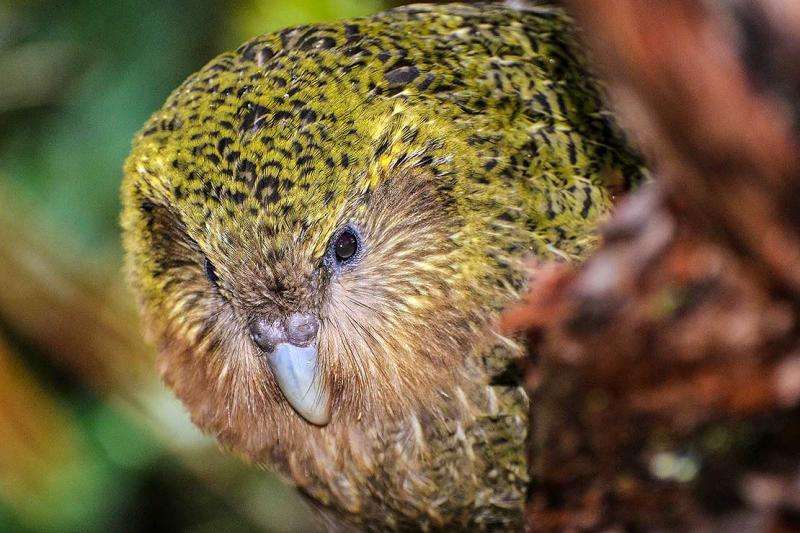Rimu berry 'game changer' for Kakapo breeding

New research from Massey University on vitamin D could help bring New Zealand's endemic kākāpō back from the brink of extinction.
There are only 125 of the native parrots left, but now researchers may have discovered the secret to keeping the birds breeding.
Dr Pamela von Hurst, from Massey's School of Food and Nutrition, has just had a paper published on the study linking vitamin D in rimu fruit with the endangered parrot's nutritional needs and breeding habits, in the Journal of Steroid Biochemistry and Molecular Biology. The research was carried out in collaboration with Professor David Raubenheimer from the University of Sydney, and staff from the Department of Conservation.
Kākāpō breed only in years when the local trees are full with fruit, which they feed to their chicks. This includes Rimu, which this new study has revealed produces berries rich in vitamin D – a nutrient essential for laying eggs and the growth of chicks.
Previous attempts to encourage breeding during years of poor fruit supply by providing supplementary food have failed. But Dr von Hurst says this latest research might be a game changer. "This could change the way we encourage breeding. Rimu berries provide kākāpō with high levels of vitamin D and calcium, meaning they are the perfect food package for breeding and nesting birds.
"The study challenges previous beliefs there are no food sources with a naturally high concentration of vitamin D. Kākāpō are forest-dwelling, nocturnal and flightless, which means minimal sun exposure, so we assumed there must be a dietary source. This confirms that."
From the beginning of the breeding season in spring, female kākāpō consume Rimu berries, which at that time are unripe. Dr von Hurst says while the vitamin D content of the unripe berries isn't yet known, it's possible that vitamin D in the fruit triggers nesting in the female bird. "We know that kākāpō breed in response to rimu fruiting; this result may tell us why, and help us identify which other trees stimulate breeding."
"The next step will include measuring the vitamin D levels of adult birds during breeding, growing chicks and rimu fruit throughout the ripening process, to see if the vitamin D content changes over time, and with it, the levels in the birds".
The Department of Conservation's Kākāpō Recovery Team is keen to build on this research. Dr Andrew Digby says, "This potential link between vitamin D in rimu fruit and kākāpō breeding is an exciting finding, and is a high priority for us to explore further. We have a collaborative programme in place to expand on this research in the upcoming breeding season, to further understand the link between vitamin D and kākāpō health and fertility."
Provided by Massey University



















